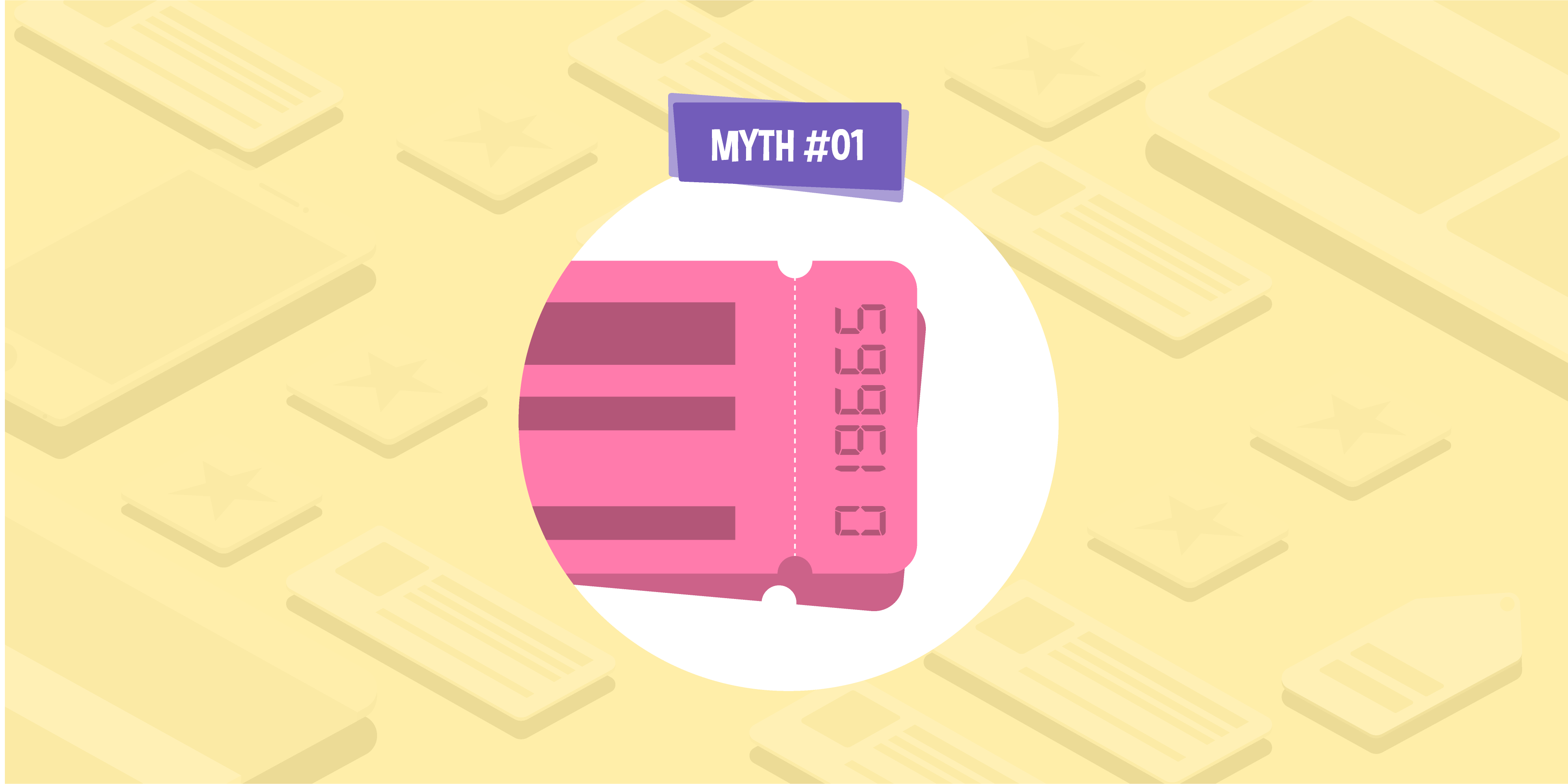
- 11 Nov 2020
- 7 Min read
How to ensure your website offers a positive user experience
- by Emily Park
When you’re designing a website for your business, your number-one priority should be offering the best possible user experience. Not only will this impress potential customers when they visit your site for the first time, making them much more likely to convert, but it can also have a positive impact on your Google rankings.
Your website is your virtual storefront. You want it to show shoppers that you are a trustworthy and professional company that they can feel confident spending their money with. Plus, just from a practical point of view, you want to make it as easy as possible for people to find the items and information that they need — this is sure to earn you more sales and will reduce how much time you spend delivering customer service.
Building a website that offers a positive user experience can be easier said than done, though. So, here, we’re going to provide you with our top tips that should help.
Make sure it loads quickly
We expect to find any product or piece of information at the touch of a button, and we’ve become very impatient as a result. So, to keep your website’s bounce rate low and ensure people actually stay to browse your products or services, it’s vital that your website loads as quickly as possible. If it doesn’t, you could well lose a lot of custom to competitors.
According to research by Akamai [PDF], the ideal load time for a website is two to four seconds. And, for every second you can shave off your website’s load time, your conversions could increase by around 7%.
Google has its own PageSpeed Insights tool, which you can use to see how your site measures up, and there are a number of steps you can take if you aren’t happy with the results. Improving your hosting plan, reducing how many HTTP requests your site makes, and shrinking the size of your image files are all great moves that can make a huge difference. Learn to Code With Me has an in-depth guide to reducing your website’s load time, which also has plenty of other tips you can use.
Ensure your site is easy to navigate
The navigation is one of the most important features of your website, because it’s the element that points your customers in the direction of the information they’re looking for. Having a clear and practical website navigation will also make it much easier for search engines like Google to crawl and understand your website, which could really help to boost your organic rankings. So, it’s incredibly important that you get this right.
There are some best practices you can follow, which will help you to create a navigation that works for everyone. These include:
- Putting your users first: First and foremost, your navigation needs to satisfy the people who will use it. Optimising your menus for SEO should come second.
- Making clarity the key: Your navigation should be easy to read and use. Don’t complicate things — if you start to find it confusing, you customers will too.
- Adding a search function: If someone knows exactly what they need, they might not want to spend time looking for it in your categories. A search function should help.
- Making browsing easier with breadcrumbs: Breadcrumbs are great for helping customers to understand how your site is structured, and they might also lead people to other products they might be interested in. They might look something like this: Books > Non-fiction books > Autobiographies.
- Including a sitemap: A sitemap is like a directory for your website and will include text links to the most important pages. This helps users and search engines to better understand your site’s structure.
Use all of these tips, and you’ll be able to create a practical navigation menu that’s easy to use, as well as optimised for SEO.
Make it responsive
These days, making your site responsive is non-negotiable. It needs to display properly on any device, from a desktop computer to a smartphone or tablet.
Last year, 43% of UK online purchases were made on a smartphone (Statista) so, if your website doesn’t work well on these devices, you could be missing out on a huge proportion of sales. You could also leave potential customers feeling frustrated and disappointed if they visit your site, only to find they can’t use it on their device, which could deter them from shopping with you in the future.
Whether you’re building your website yourself or have enlisted the help of a developer, it’s important that you keep all internet users in mind, whatever device they might be browsing on. So, make responsiveness a huge priority.
Give every page a clear call to action
Calls to action are a crucial element of any website’s content and design, because they tell the user exactly what you want them to do.
Every page on your website should have a clear purpose, whether that’s to encourage your customers to buy something, sign up to your newsletter, or read more about your services. You should make this as clear as possible in your copy or with a specific button. Your call to action doesn’t have to be different for every page, though. You might find that most of them simply point people in the direction of you contact page or instruct shoppers to “book an appointment today”. The important thing is that you’re directing people down your sales funnel, whatever that might look like for your particular business.
You never want to leave customers wondering what they should do next, or how they find out more. So, assess every page of your website and make sure there’s no room for this. If there is, you probably need a call to action!
Ensure all of your content is easy to read
Your website should be populated with helpful content, including category copy that gives people more information about your products, FAQ sections that answer common queries, and in-depth guides that are relevant to your audience. But it’s not enough to just write and publish this content — you also need to ensure it’s very easy to read and understand.
There are a number of things to consider. Firstly, you simply need to make sure that the text on your website is legible, regardless of the device someone is reading on. This means you’ll want to use a simple font in an appropriate size and colour. You should check this on a range of devices before making your choice.
You’ll also want to make sure all of your content is written in an engaging but clear way, so the average person can understand it. Of course, you’ll sometimes be speaking to professionals and experts working in your industry, but it’s likely you’ll want your content to appeal to a wide range of people who might be interested in your products or services. The simpler your copy is, the more readers you’ll be catering to.
Make sure your site is accessible
You want anyone to be able to use your website, so you need to consider the barriers that might prevent someone from being able to do so. There are a wide range of reasons why someone might struggle to use a website that hasn’t been designed with accessibility in mind, but here are just some of the most common disabilities or conditions that you’ll want to keep in mind:
- Visual impairment: Some internet users are visually impaired, which can range from partial loss of vision to total blindness.
- Hearing impairment: Some internet users will suffer from hearing loss. This can range from a reduced ability to hear to complete deafness.
- Physical disabilities: Some users may have physical disabilities that affect their ability to make precise movements — when using a computer mouse, for example.
- Photosensitive epilepsy: If someone has photosensitive epilepsy, they might suffer from seizures that can be triggered by flashing lights.
- Learning or cognitive disabilities: Some of the people who visit your website might also have learning or cognitive disabilities. There’s a whole host of conditions to consider, from dyslexia to dementia.
Making your website as accessible as possible will typically be a very big job, but it’s an important one. You want your business to cater to everyone, so it’s vital that your site can be used by anyone.
Search Engine Journal has a guide to making your website more accessible, which outlines some of the best changes you can make. It explains the importance of adding alt text to your images, giving users the option to change the size of your site’s font, and how to keep contrast sensitivity in mind. It also outlines how you can make multimedia content more accessible, the importance of descriptive URLs, and why you should keep tables to a minimum.
When you’re building a website for your business, prioritising the user experience is paramount. Not only will it help to engage more potential customers and encourage conversions, but it can also boost your Google rankings. The search engine always stresses the importance of putting users first and creating a website that’s easy to use and navigate is incredibly important for this.
Here at Glass Digital, we’re experts in helping businesses to boost their online visibility through organic search, PPC, and affiliate marketing. If you would like our help and advice, get in touch today — we would love to help your business thrive.

